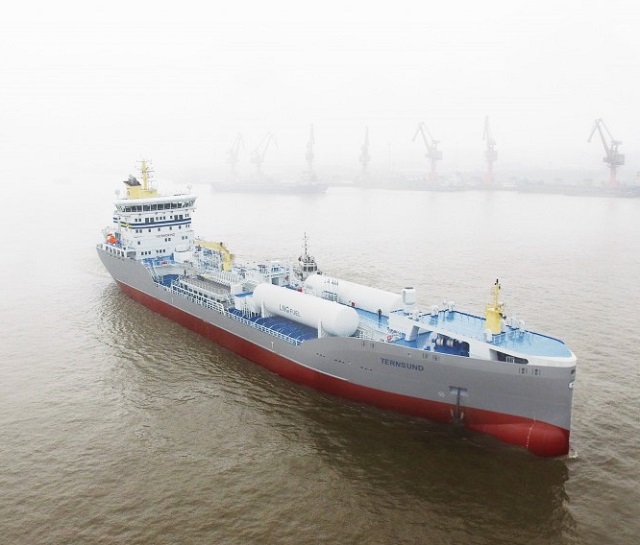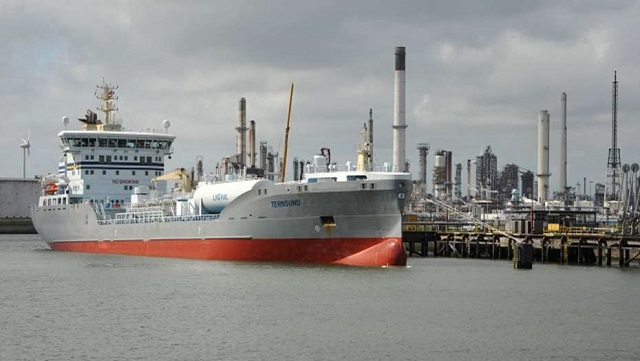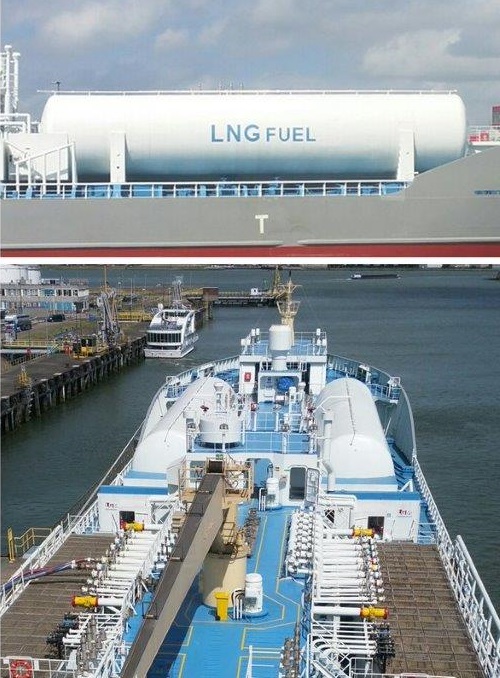Rotterdam Welcomes First Ship to Bunker LNG
The Port of Rotterdam started its first LNG bunkering operation for a sea-going vessel on Tuesday.
On Sunday, the chemical tanker Ternsund arrived in Rotterdam for the first time to unload naphtha and gas oil at Vopak in the Botlek. On Monday afternoon, the ship was shifted a terminal at the Willem Alexanderhaven for the bunkering operation.
First, the temperature of the fuel tank was cooled down from ambient temperature to operating temperature. With the aid of nitrogen, the temperature was reduced from +20 °C to -162 °C in eighteen hours. Then the actual bunkering of Shell LNG started. The bunkering will be completed on Wednesday morning, and the vessel will then continue to Gothenburg.
The product tanker, operated by the Swedish shipping company Terntank, will receive Rotterdam’s first incentive given for LNG bunkering - a premium amounting to a discount of ten percent on the seaport dues.
Ternsund is the first newbuilt LNG-fuelled product tanker. The vessel arrived in Rotterdam as part of its maiden voyage from China to Singapore for loading cargo and then on to Malta and Rotterdam for discharge.
The vessel is a result of the E.U. co-funded project Into the Future – Baltic SO2lution, a co-operation between shipowner Terntank, marine solutions provider Wärtsilä, fuel and bio-products supplier North European Oil Trade (NEOT) and energy and environmental consultant Wega under the Zero Vision Tool.
On June 27, Terntank took delivery of the Danish-flagged Ternsund from Avic Dingheng Shipbuilding in China. Ternsund is the first vessel in a series of four sisters.
The Rotterdam Port Authority expects other sea-going vessels to bunker LNG in the future. The cost for the cleaner fuel is some 20 percent lower than elsewhere, and moreover, Rotterdam offers various incentives, it says.
Next year, the Port Authority will welcome a new bunker vessel which Shell will use to supply sea-going vessels with LNG from the water.

that matters most
Get the latest maritime news delivered to your inbox daily.
The Port of Rotterdam Authority aims to turn the port into a major European LNG hub. By using LNG, inland vessels, coasters, ferries and heavy transport can reduce CO2 emissions up to 20 percent and NOx emissions up to 85 percent. Sulphur and particulate matter emissions are reduced to practically zero.



